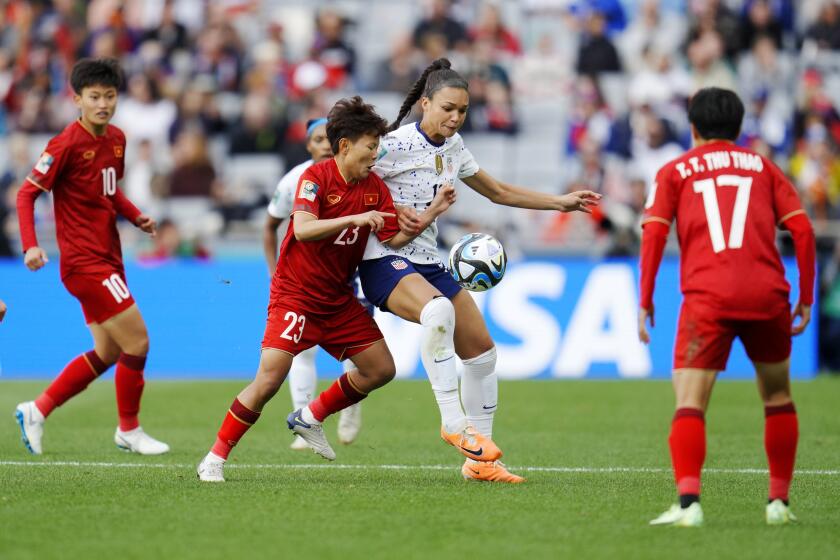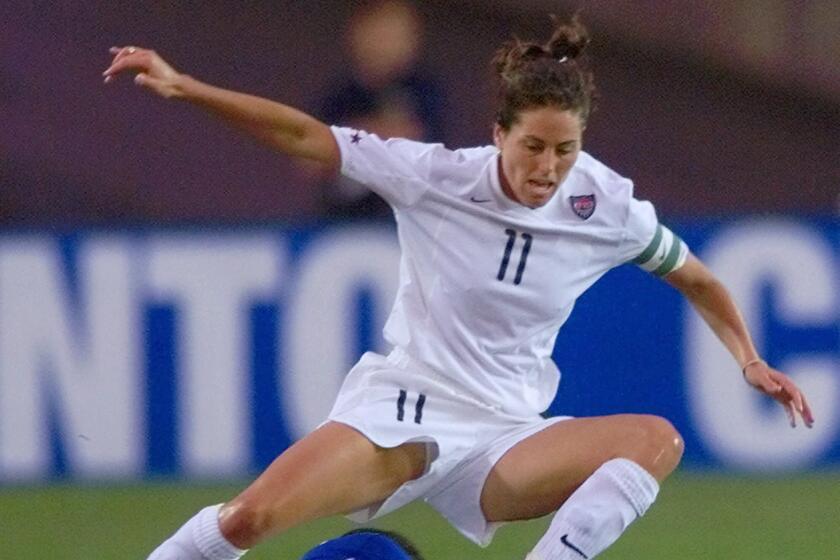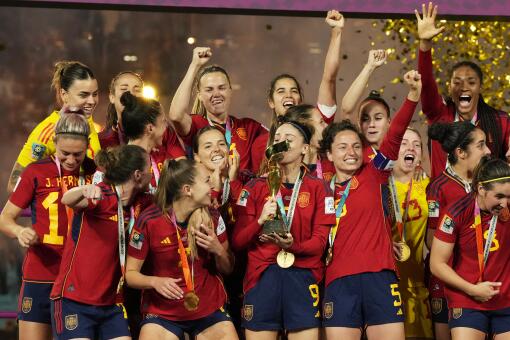The secret to U.S. women’s success? The ‘code’ passed down to each new generation
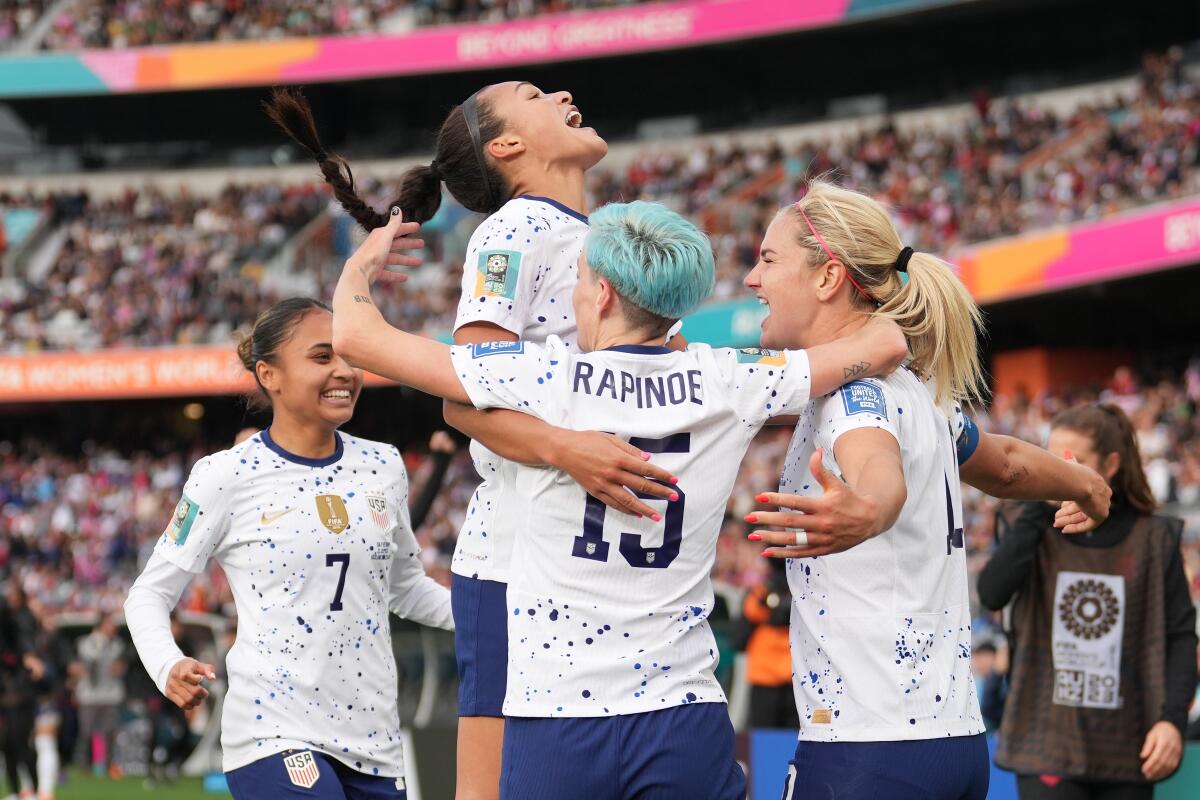
- Share via
AUCKLAND, New Zealand — Early in her career with the national team, Alex Morgan found herself sharing a hotel room with Abby Wambach, who was then the second-leading scorer in U.S. soccer history. As Morgan gushed over her roommate’s achievements, Wambach held up a hand to quiet her.
“You need to do better,” she said.
Fast forward 11 years. Wambach has long since retired and Morgan is the leading scorer on a U.S. team chasing a third consecutive World Cup title. And now she’s one of the experienced players issuing the challenges.
“If something’s hard, or a younger player is like, ‘Oh, I don’t want to stay out there,’ they remind us that that’s what it takes. This is what this environment is,” Sophia Smith said of the veterans.
Smith proved a fast learner, scoring two goals and assisting on a third in her World Cup debut Saturday, then crediting her teammates for that performance.
The U.S. women’s national team was tested during its World Cup match against Vietnam, but coach Vlatko Andonovski and his players aren’t worried.
If the team is defined by its long run of success, it’s been built on a culture of selflessness passed down from generation to generation like a relay baton, beginning with Mia Hamm, Julie Foudy, Michelle Akers and Kristine Lilly, the leaders at the first World Cup in 1991, to Morgan, Megan Rapinoe and Lindsey Horan, the leaders at this one.
And it didn’t happen by accident.
“We had lots of discussions with the younger players about what we stand for, the ‘we’ being greater than the ‘me,’ the power of sisterhood,” Foudy said. “A big part of what we do is about pushing for off-field progress while also pushing us all to be better on the field.”
Imparting that philosophy has become particularly important this summer since the team in New Zealand includes six women with fewer than 20 appearances for the U.S. and a record 14 who had never played in a World Cup.
Two-time World Cup winner Julie Foudy shares her bond with U.S. women’s national team members as the current roster departs for the 2023 World Cup.
“In the first camp, that leadership [made] sure players understand what’s expected of them in regard to being a professional, training at max capacity,” said Briana Scurry, who played on four World Cup teams, the first three alongside Foudy and Hamm. “They are expected to understand the culture of the team as well, that we fight for each other. We expect greatness and you’re expected to be a team player, which means doing your part like picking up pinnies after training or having all your stuff [ready].”
Scurry said her initiation to the team came moments before her first game in 1994 when captain Carla Overbeck walked up to her, put her hands on her shoulders, looked her in the eyes and said “You deserve to be here.”
Scurry pitched shutouts in her first two starts and went on to have one of the greatest careers by a goalkeeper in international soccer history.
“Little things like that, that’s what leadership does,” she said.
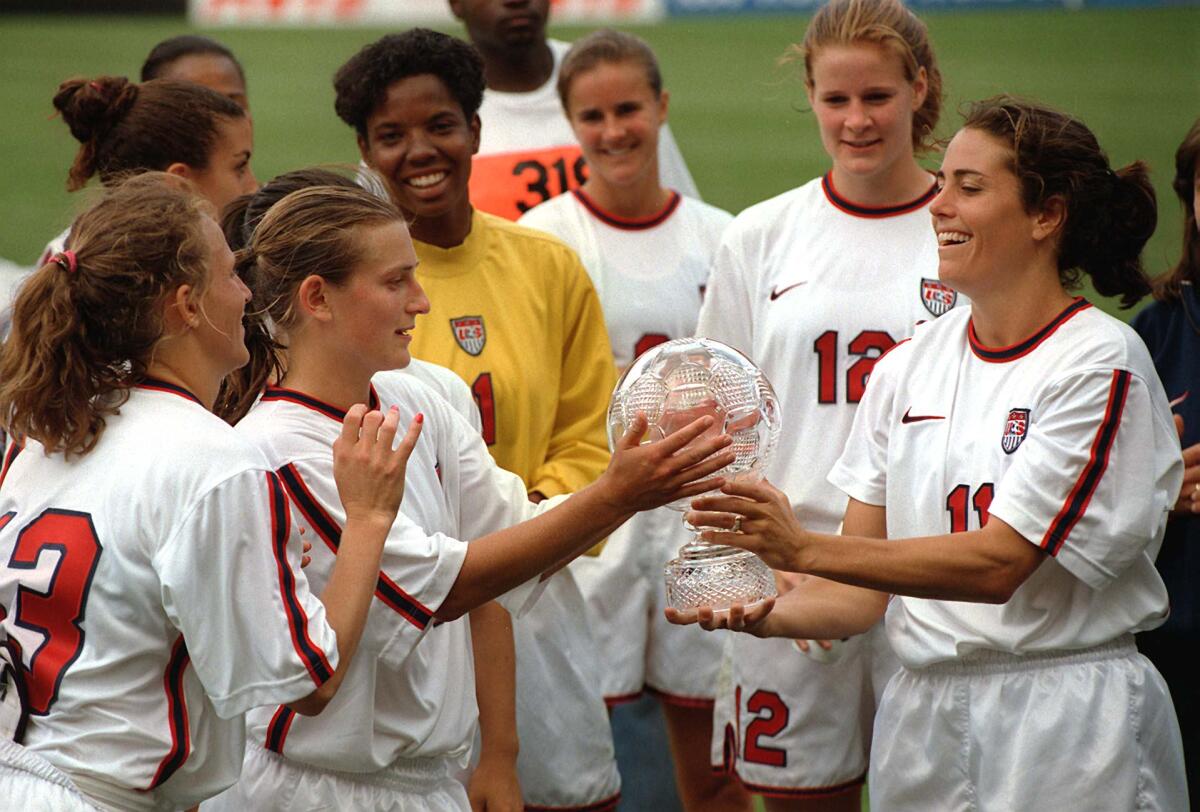
What makes this all work is the fact the concepts Foudy developed and Wambach, Morgan and Horan inherited are enforced not by the coaches but in the locker room, where putting on the uniform is seen not just as a reward, but also as the acceptance of rules and obligations.
“It’s positive affirmations. It’s strive to set a new standard, strive to be the best version of yourself and drive this team to being the best,” said Aly Wagner, who played in two World Cups and won two Olympic gold medals in a 10-year career with the team. “There’s a standard of representing the crest. And when that doesn’t happen, the beauty of the culture is that we can have those difficult conversations.”
Which is exactly what happened during Wagner’s second World Cup in 2007 when goalkeeper Hope Solo told a reporter coach Greg Ryan made a mistake when he started Scurry over her in a 4-0 loss to Brazil. Hours later, after Lilly, the team captain, called her into a meeting with six veterans, Solo was suspended — by the players, not the coach — and told she had to call Foudy to apologize for tarnishing the reputation she had built with the team.
“There’s a code of excellence and, more importantly, team above self that we follow with the national team,” said Wagner, now a Fox Sports analyst. “That’s the expectation and you respect it.”
Rapinoe, who is playing in her fourth World Cup, also was baptized into the team philosophy by Lilly, who appeared in 354 games for the U.S., more than any player, male or female, in history.
“We were running and I’m sure I was not doing well. So I started complaining about how hard it was,” Rapinoe remembered. “She looked me dead in my face. ‘It’s hard for everyone.’
“Always showing up and giving everything you have and demanding that of your teammates, that all of us are in this together, that’s one of the biggest lessons. Just learning how to be a champion every single time you pull on the shirt and every single practice and every single session that you have on your own, that’s why this team is successful.”
Wambach was still a teenager when she learned the lesson she passed on to Morgan. On a visit to the team’s training base in Chula Vista, she was struck by a 5-by-7-inch picture taped next to the exit. The photo showed the Norwegian team celebrating after beating the U.S. in the 1995 World Cup semifinals and it was placed near the door so it was the last thing the players saw before hitting the practice field each day.
The team, Wambach quickly understood, wasn’t fueled by the thrill of victory. Its motivation was to never again taste the agony of defeat. So she made sure that Morgan understood her job was not to applaud Wambach, but to surpass her.
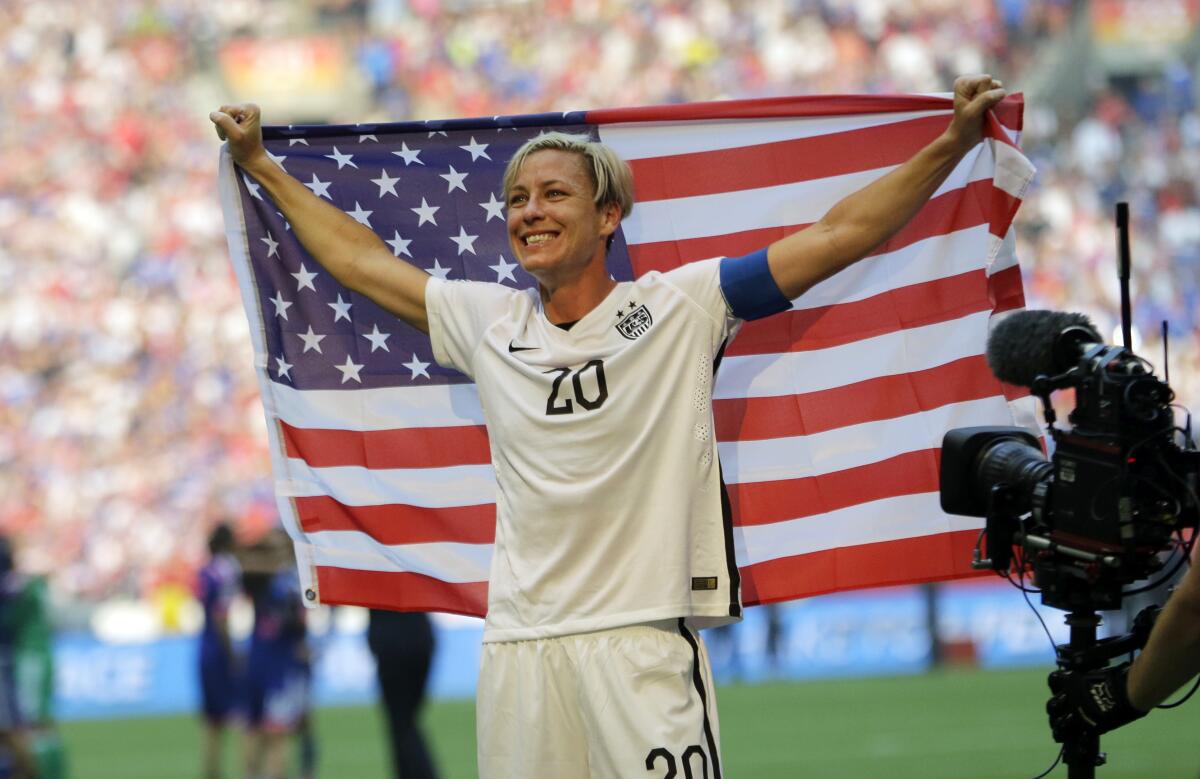
But if the team’s only legacy came from collecting wins and trophies, what was it really accomplishing? That too was part of the ethos the Foudy-Hamm generation established when, in 1999, many of the players became the first to push U.S. Soccer for equal pay and working conditions, a battle the team finally won last year. Not surprisingly, Cindy Parlow Cone, the federation president who got that deal done, also played alongside Foudy and Hamm in two World Cups.
“There’s never going to be a day that we can just show up and focus on soccer because there are so many things, both sport and not sport-related, that we’re going to feel some responsibility to help shift or to correct,” said Becky Sauerbrunn, the team’s longtime captain who missed this World Cup with a foot injury.
“You learn pretty quickly when you get in with the senior national team that you have to be excellent at what you do, but that you also have the second obligation to make the most of your platform with this team. We know that we never would have been at this spot had it not been for all the work all these other generations of women have done. And our job is to do all the work and let the next generation stand on our shoulders so that they can see further.
The 2023 FIFA Women’s World Cup prize money purse is a record $152 million, a 300% jump from 2019. Still, it remains roughly a third of the men’s purse.
“That’s ingrained into the women of this program. Being on the women’s national team, you understand that and you take up that baton.”
And then you pass it on, which is why veterans like Foudy and Scurry speak of the current team as “we” and not “they.”
“I absolutely feel part of this team,” Scurry said. “We are a sisterhood. Almost every player who’s played in the last decade, from their arrival on the team, trace it back to the ’99 World Cup team. Carli Lloyd, Abby Wambach, Ali Krieger saw us play in person or in stands at 10 years old or on TV and they all had a dream from what they saw and went on to achieve it.
“Like Sophia Smith, there’s a picture of her and Abby Wambach together when Sophia was young. You can’t tell me that wasn’t her vision when she was 10 years old and you can’t tell me that wasn’t what pushed her forward on a direct line to score two goals.”

